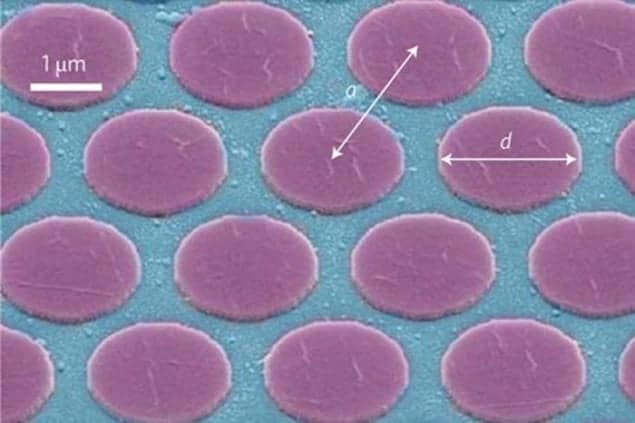
A new material made from several layers of graphene is an effective shield for terahertz and microwave radiation, while letting visible light through. So say researchers in the US, who have created thin films that can be engineered to strongly absorb radiation in a specific band of the electromagnetic spectrum. Shields made of the material could be used to reduce external electromagnetic interference in sensitive electronic equipment and the team also claims that the material could be used to create terahertz filters and polarizers. Such devices could prove useful in the emerging field of terahertz imaging.
Despite being just one atom thick, graphene is a strong absorber of electromagnetic radiation over a wide range of wavelengths – particularly in the far infrared and terahertz parts of the spectrum. This is extraordinary because conventional materials normally need to be thousands of atoms thick to be as effective. This high absorption is a result of graphene’s unusual electronic properties, which result in its electrons moving extremely fast and behaving like relativistic “Dirac” particles with virtually no rest mass.
Phaedon Avouris and colleagues at IBM’s TJ Watson Research Center in New York have created a film comprising alternating layers of graphene and an insulator. The team has shown that a film containing just five layers of each material can shield electromagnetic radiation in the terahertz and microwave ranges by up to 97.5%, while remaining transparent to visible light.
Discs and ribbons
What is more, by making films that contain arrays of tiny graphene discs or ribbons, the researchers have found that they can create tuneable terahertz filters and polarizers. The discs and ribbons are just a few microns across and absorb light by confining it to regions that are hundreds of times smaller than the wavelength of the light by exploiting plasmons – quantized collective oscillations of electrons inside the structures – that interact strongly with light.
The team began by stacking large graphene sheets alternately with thin insulating layers to form a five-layer structure. Then they used electron-lithography techniques to create patterned regions that measured 3.6 × 3.6 mm. Finally, they measured the electromagnetic transmission spectra of the sample in the terahertz and infrared regions using a Fourier-transform infrared spectrometer.
The active elements in such a device are the graphene layers, explains team member Hugen Yan, lead scientist of this project, and it is the plasmons in the material that absorb and enhance the reflection of terahertz and microwave radiation. Plasmons are quantized excitations of the conduction electrons in the material. The plasmons inside the discs and ribbons oscillate with the terahertz light and, at certain frequencies, the two oscillate in resonance. “It is at this resonance that the shielding efficiency reaches its maximum,” Yan explains.
“Graphene could be used as a transparent terahertz and microwave-shielding material and so help prevent external electromagnetic interference in high-accuracy electronic equipment,” he says. “Such a shield could even help protect people from radiation at these wavelengths, which are hazardous to human health, according to the World Health Organization.”
Patterned graphene could also be used to make terahertz frequency filters and polarizers for photonics and optoelectronics applications, he adds.
The team is now looking at how the patterned graphene nanostructures respond to terahertz frequencies under high applied magnetic fields. “We will also study graphene plasmonics over a broader frequency range, including mid-infrared regions,” says Yan.
The current work is detailed in Nature Nanotechnology.



